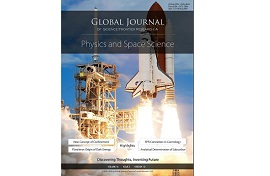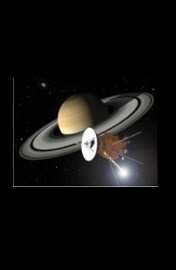[gview file=”https://advanceddynamics.net/wp-content/uploads/2016/06/GLOBAL-JOURNALS-PRESS-RELEAS.pdf”]
Author Archive: advancedwebmaster
Behaviour of Rotational Bodies
[gview file=”https://advanceddynamics.net/wp-content/uploads/2016/03/BLOG-OF-GLOBAL-JOURNALS-25-03-16.pdf”]
Blog of Global Journals
[gview file=”https://advanceddynamics.net/wp-content/uploads/2016/03/BLOG-OF-GLOBAL-JOURNALS-PRESS-NOTE.pdf”]
The pendulum of dynamic interactions
[gview file=”https://advanceddynamics.net/wp-content/uploads/2015/10/Press-Release-PID.docx”]
NEW APPLICATIONS IN ASTROPHYSICS OF THE THEORY OF DYNAMIC INTERACTIONS
Theory of Dynamic Interactions studies the effects produced on a body with intrinsic rotation
NEW APPLICATIONS IN ASTROPHYSICS OF THE THEORY OF DYNAMIC INTERACTIONS
These results are applicable to other dynamic systems such as planetary system, or other areas of physics and technology, possibly enabling new advances in research and innovation in an unprecedented rotational dynamics Interactions
Madrid, June 2015.- The School of Aeronautical Engineering (UPM), has been the scene of the presentation of the thesis: Flight Simulator. Journey to Saturn on a space shuttle, which has incorporated the criteria of the Theory of Dynamic Interactions to calculate more accurately simulated interplanetary trajectories.
The author of the thesis, Almudena Martin Gutierrez, praised the implementation of this theory in their project, after analyzing different texts published by the research group of Spanish private ADVANCED DYNAMICS, which has been developing this theory.
On paper: The dynamic abnormalities Pioneer probes (G. Barceló http://dinamicafundacion.com/wp-content/uploads/2014/02/ANOMAL%C3%8DAS-DIN%C3%81MICAS-EN-LAS-SONDAS-PIONEER1.pdf ), inconsistencies observed in the trajectories of the Pioneer probes were analyzed, proposing that the observed changes could be justified with the Theory of Dynamic interactions.
Almudena Martin estimated possible to increase the accuracy of the interplanetary trajectories simulated using the same methodology, so it considered appropriate to use the same dynamic calculations on the simulator.
Theory of Dynamic Interactions studies the effects produced on a body with intrinsic rotation (as in the case of a spacecraft in interplanetary travel), and complements the principles of classical mechanics.
In its report, the author also refers to another text by the same author: A new rotational dynamics of interactions for the planet Saturn (http://dinamicafundacion.com/wp-content/uploads/2014/02/UNA-NUEVA-DINAMICA-ROTACIONAL-DE-INTERACCIONES-PARA-EL-PLANETA-SATURNO.pdf ) to evaluate the effect of Saturn’s rings on the probe, and even to determine the behavior of the rings of Saturn itself.
After application of these innovative approaches of the Theory of Dynamic Interactions in its calculations, the author of the thesis proposes that “The application of these dynamics to astrophysics assumptions and, in particular, the dynamics of Saturn and its rings, could promote new advances in the discovery of his puzzling behavior. For example, it can justify that the heavenly bodies orbit and rotate simultaneously, or simultaneously all are in the same plane as the rings of Saturn, when subjected to a constant torque. These results could then be applied to other dynamic systems such as planetary system, or other areas of physics and technology, possibly allowing suggestive new advances in research and innovation in an unprecedented Rotational Dynamic Interactions “.
This new physical-mathematical interpreting celestial mechanics model, as was proposed by Dr. Barceló in the article: Proposal of new criteria for celestial mechanics (http://dx.doi.org/10.4236/ijaa.2013.34044), published in the International Journal of Astronomy & Astrophysics, volume, 3-4 December 2013. In this paper was summarized the treaty published by the same author in two volumes: IMAGO UNIVERSI. A history of the human conception of the cosmos. (Ed. Arpegio. Barcelona, 2013),
Imago Universi described, in a fascinating way, human desire and the passion for knowledge of the universe. In the last chapter of this treaty the implementation of the Theory of Dynamic Interactions astrophysics and specifically to the dynamics of stellar systems and galaxies it is proposed. The treaty has its own website: http://imagouniversi.com/, and a video presentation that can be viewed at http://vimeo.com/62247544.
More information:
Roatan Comunicación – Patricia Cavanillas – 91 563 67 80 – pcavanillas@roatan.es
☏ (+34) 914 112 823 (+34) 915 614 107
@ comunicacion@advanceddynamics.es
✉ C. Pedro de Valdivia 31
28006 Madrid (España)
INTERVIEW WITH DR. BARCELO RNE 3
INTERVIEW WITH DR. BARCELO RNE 3 ON THE THEORY OF DYNAMIC INTERACTIONS, AND ITS APPLICATION IN THE DESIGN OF NUCLEAR FUSION REACTORS OR THE INTERPRETATION OF ATMOSPHERIC PHENOMENA AS TORNADOES.
Several recently published articles by Dr. Barceló analyze in depth the Theory of Dynamic Interactions (TID), and their scientific and technological applications.
Radio 3, in its scientific dissemination program: System failure, which airs Sundays from 12 to 13 hours, dedicated the number of June 14, 2015 to a long interview with Dr. Barceló. System failure has been conceived as a weekly magazine for geeks, science lovers and curious in general.
– System failure. Episode 183: The flight of the boomerang
Sunday 14.06.15 12.00 13.00.
Presented and directed by: Santiago Bustamante.
On the following link is available RNE 3 interview:
http://www.rtve.es/alacarta/audios/fallo-de-sistema/
Also in this direction can be downloaded audio from the interview::
Madrid, june, 2015. On the occasion of the publication in the prestigious American scientific Journal of Applied Mathematics and Physics Vol.3 No.5, a new article on the theory of dynamic interactions, titled Flight of Boomerang II, written by the Spanish scientist Gabriel Barceló Rico-Avello, journalist Santiago Bustamante made a long interview with the author, in its scientific dissemination program System failure, Radio 3.
The article includes a video, produced by Javier Sánchez Boyer, illustrating the Boomerang dynamic behaviour, which can be viewed at:
https://www.dropbox.com/s/6h8lso3gbexck0j/Bomerang_v3_Mini.mp4?dl=0
In his opinión the boomerang is a particularly significant case of a body subjected to multiple rotations, so the analysis of its dynamic behavior allows us to better understand his theory. In the interview, the scientist Barceló justified and interprets his theory of dynamic interactions, and suggests the implementation of the dynamic theory of multiple scientific and technological applications, such as in the design of nuclear fusion reactors or in the interpretation of atmospheric phenomena such as tornadoes.
Proposes Barceló new dynamic hypotheses for rigid bodies in motion, subject to various rotations not coaxial simultaneous, suggesting a structured dynamic theory, which would establish how the mass behaves when subjected to different external actions, that force you to make successive rotations, not coaxial. The author argues that, in the event of any mass is subject to rotational acceleration, the reaction can be deduced signs to identify the previous dynamic state of the moving body, which also would clarify the Theory of Relativity.
This proposal could enhance our understanding of these dynamics phenomena and improve predictions about them.
Full documentation about this theory please visit:
Theory of Dynamic Interactions: The Flight of the Boomerang II
[gview file=”https://advanceddynamics.net/wp-content/uploads/2015/06/Nota-Prensa-Vuelo-Bumerán-EN.docx”]
The Journal of Applied Mathematics and Physics publishes the scientist Gabriel Barcelo’s Theory of Dynamic Interactions
PRESS RELEASE
The “Flight of the Boomerang” explains his Theory of Dynamic Interactions
The Journal of Applied Mathematics and Physics publishes the scientist Gabriel Barcelo’s Theory of Dynamic Interactions
- His Theory of Dynamic Interactions casts doubts on the classical theory, and it may greatly affect the foundations of dynamics, astrophysics, cosmology and atomic physics.
- This new theory could explain phenomena such as tornadoes, boomerangs guiding of a spacecraft or steering of ships without a blade rudder.
Madrid, xx May, 2015.- The prestigious American Journal of Applied Mathematics and Physics Vol.3, No.5, published this month the new article on the Theory of Dynamic Interactions: The Flight of the Boomerang II, written by the Spanish scientist Gabriel Barceló. This theory, that questions classical theory, may explain phenomena such as tornadoes, the guiding of a spacecraft or steering of ships without a blade rudder.
This article is the second part to the paper that was published in volume 2 of the same scientific journal. This paper presents a view on the Theory of Dynamic Interactions. The boomerang dynamic behaviour is a clear example of the application of this theory. As Gabriel Barceló explains, “after its launch, the boomerang begins to rise practically vertically and rotate like a disk. It then drops gradually travelling in a circular path, doing a complete turn, without ever ceasing to rotate on itself. It is this peculiar closed path that some experts find complicated when explaining how a rocket is put into orbit”.
The article includes a video, produced by Javier Sánchez Boyer, illustrating the Boomerang dynamic behaviour, which can be viewed at:
https://www.dropbox.com/s/6h8lso3gbexck0j/Bomerang_v3_Mini.mp4?dl=0
The flight of the boomerang illustrates this theory
The boomerang is a particularly significant case of a rotating body. Numerous texts have been written to try to explain the flight of the boomerang, but the reason behind its path and its behaviour in flight remain unanswered, until now, in the context of Classical Mechanics. The document proposes a nature in which bodies with intrinsic rotation do not behave in accordance with the laws of Classical Mechanics. This new proposal, based on non-Newtonian hypotheses, could easily explain the paradoxical and surprising flight of the boomerang, as well as the dynamic behaviour of so many bodies that are not easily understood in the context of Classical Mechanics. The article presents keys to interpret the behaviour of galaxies or of Saturn’s rings, under a new perspective.
This Theory proposes that when a rigid body is subject to successive torque, the first momentum will generate its intrinsic rotation, but successive non-coaxial momenta generate a non-uniform field of velocities, which can be identified as anisotropic distribution of acceleration, and mathematically it can be considered as an inertial force field. If the rigid body also has kinetic translational momentum, the translational velocity field will join the anisotropic field of velocities generated by the second momentum, thus forcing the centre of mass of the mobile object to modify its path, without any external force being applied in that direction. Therefore, in the dynamic phenomena that operate under these hypotheses, kinetic rotational energy will be transferred into translational energy, and vice-versa.
Repercussions of the Theory of Dynamic Interactions
The Theory of Dynamic Interactions may substantially affect the foundations of dynamics, with applications in astrophysics, cosmology, atomic physics, etc. It generalises the concept of gyroscopic torque and other inertial phenomena, adding them to a unified structure of a new non-inertial rotational dynamics. “The Flight of the Boomerang” suggests new dynamic hypotheses for non-inertial systems, which could be quite significant in the configuration of physics. This proposal is clearly unorthodox, therefore it is expected that the new theory will not be accepted without a controversy.
This theory has multiple possibilities for scientific and technological applications. The Theory of Dynamic Interactions could contribute to the efficient steering of a ship without a blade rudder, thus saving energy, or the guiding of a spacecraft. The theory could also be applied in confining plasma in nuclear fusion reactors, or even in research on tornadoes.
Further information:
Roatan Comunicación – Patricia Cavanillas – 91 563 67 80 – pcavanillas@roatan.es
http://www.advanceddynamics.es/
http://www.dinamicafundacion.com/
☏ (+34) 914 112 823 (+34) 915 614 107
@ comunicacion@advanceddynamics.es
✉ C/ Pedro de Valdivia, 31
28006 Madrid (Spain)
DYNAMIC INTERACTION CONFINEMENT
[gview file=”https://advanceddynamics.net/wp-content/uploads/2015/01/ADSA-EN-Dynamic-Interaction-Confinement.docx”]
ON MOTION. ITS RELATIVITY AND THE EQUIVALENCE PRINCIPLE
[gview file=”https://advanceddynamics.net/wp-content/uploads/2015/01/ADSA-EN-On-Motion.docx”]








